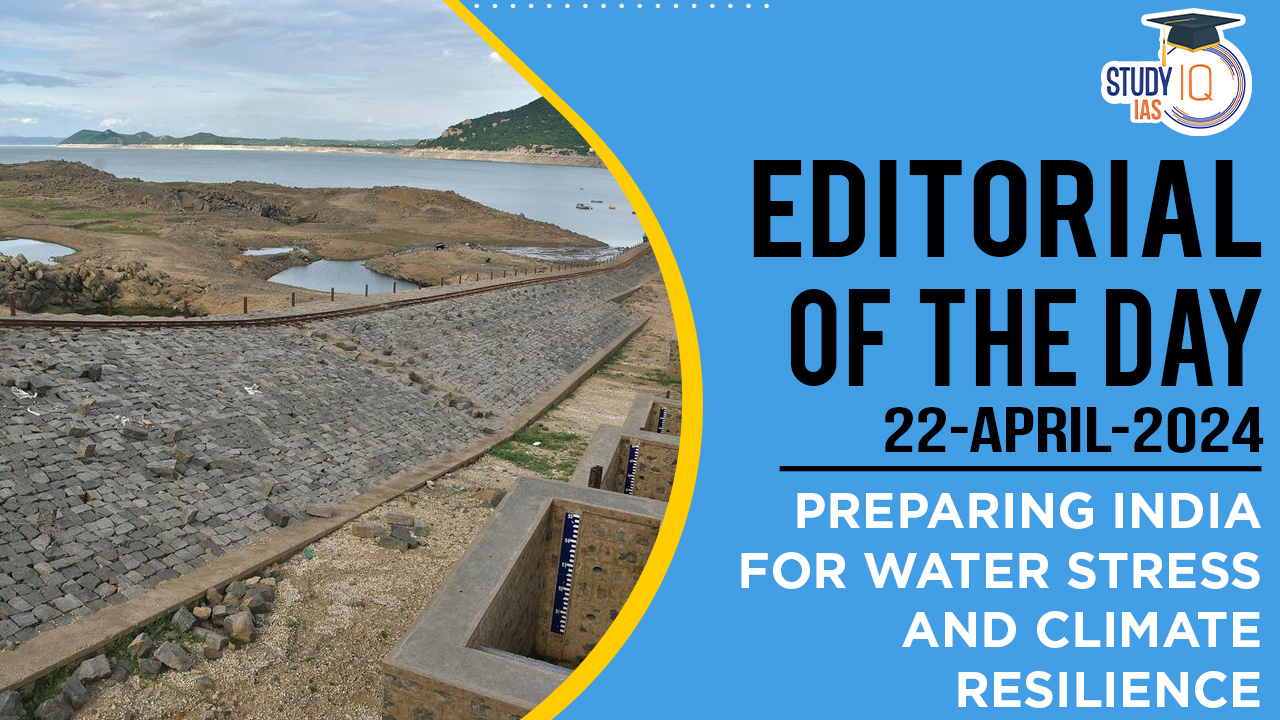Table of Contents
Context: The India Meteorological Department predicts hotter summers and longer heat waves from April to June, necessitating preparations for water stress.
India’s Water Security and Climate Challenge
There is a need to shift from seeing environmental stresses like heat and water shortages as temporary issues addressed through disaster relief to recognizing them as chronic risks requiring sustained responses.
- Economic and Environmental:
- India’s land and population ratio is disproportionate, housing 18% of the world’s population on 2.4% of the Earth’s surface and possessing only 4% of global freshwater resources.
- About half of India’s rivers are polluted, and its 150 primary reservoirs are at only 38% capacity.
- India is the largest user of groundwater globally, and three-quarters of its districts face extreme climate events.
Strategic Importance of Water
- The interconnectedness of Water in the Economy:
- Water is integral to hydrological, food, and energy systems, affecting millions of lives.
- Precipitation influences both green water (soil moisture and vegetation) and blue water (rivers and aquifers), crucial for agriculture and the economy.
- Agriculture, employing 45% of the population, is increasingly vulnerable to climate changes, impacting rainfall patterns and agricultural practices.
- Role in Clean Energy:
- Water is crucial for producing green hydrogen, which is vital for decarbonizing industry and transport.
- Pumped storage hydropower is essential for balancing power grid loads, acting as a natural battery.
- Climate Crisis Impact:
- According to the UN World Water Development Report 2020, 75% of natural disasters in the last two decades were water-related.
- Studies show significant increases in flood-related events in India over recent decades, and freshwater usage has exceeded safe planetary boundaries.
Policy and Governance for Water Security
- Current Policies and Gaps:
- While India has made strides in disaster preparedness, current policies often overlook the interconnected nature of water with food and energy systems.
- For example, the implications of water availability for green hydrogen production and the impact of solar irrigation pumps on groundwater levels are often not considered comprehensively.
- Proposed Strategies:
- Effective water governance should integrate the nexus of food, land, and water through evidence-based and community-engaged policies.
- India aims to increase water use efficiency by 20% by 2025 through the National Water Mission and reduce non-revenue water in urban areas to below 20% with the Atal Mission for Rejuvenation and Urban Transformation (AMRUT) 2.0.
- Financial Instruments for Adaptation:
- Financial commitments for adapting to climate impacts in the water and agriculture sectors are currently minimal compared to those for mitigation.
- Innovative financial instruments like the Green Credit Programme are needed to fund climate-resilient practices, wastewater management, and alternative water sources like desalination for thermal plants and hydrogen production.
Conclusion
Systemic changes in water, energy, and climate policies are essential but won’t happen overnight. Incremental steps towards data-driven, integrated strategies and financial innovations are crucial for building a water-secure and climate-resilient economy in India.


 Monasteries in India: List of Major and ...
Monasteries in India: List of Major and ...
 National Doctor’s Day 2025: History, T...
National Doctor’s Day 2025: History, T...
 Bonalu Festival 2025: Date, History, Rit...
Bonalu Festival 2025: Date, History, Rit...





















